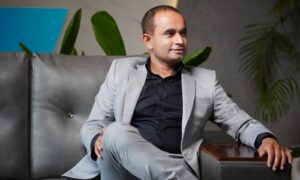When three-year-old Emma’s parents first noticed she could only say a handful of words while her peers were speaking in full sentences, they felt a familiar parental worry creep in. Like many families facing similar challenges, they wondered if this was just a phase or something more significant. Research shows that approximately 1-2 children per 1,000 are affected by childhood apraxia of speech (CAS), a motor speech disorder that can significantly impact a child’s ability to communicate effectively. The encouraging news? With proper identification and early intervention childhood apraxia strategies, children can make remarkable progress in their speech development journey.
Understanding Childhood Apraxia of Speech
Childhood apraxia of speech is a neurological disorder that affects the brain’s ability to plan and coordinate the precise movements needed for clear speech. Unlike other speech delays where children may struggle with specific sounds, CAS involves difficulties with motor planning – the brain’s process of organizing and sequencing the muscle movements required to produce speech sounds accurately.
Children with CAS know what they want to say, but their brains struggle to coordinate the complex movements of their lips, tongue, and jaw to produce the intended sounds. This disconnect between intention and execution can be frustrating for both children and parents, making early recognition and intervention crucial for positive outcomes.
Recognizing the Early Signs
Parents often serve as the first line of defense in identifying potential speech challenges. While every child develops at their own pace, certain red flags may indicate the need for professional evaluation:
In toddlers (12-24 months):
- Limited babbling or vocal play during infancy
- First words appearing later than typical speech therapy milestones
- Difficulty imitating sounds or words
- Inconsistent speech errors (saying a word correctly sometimes, but not others)
In preschoolers (2-4 years):
- Difficulty combining sounds to form words
- Groping movements with the mouth when attempting to speak
- Inconsistent vowel and consonant errors
- Difficulty with rhythm and stress patterns in speech
- Frustration when trying to communicate
These signs don’t automatically indicate CAS, but they warrant professional assessment to determine the best course of action.
The Critical Importance of Early Intervention
The developing brain possesses remarkable neuroplasticity – the ability to form new neural connections and adapt throughout life. This capacity is particularly strong during early childhood, making the period between birth and age five a critical window for speech and language development.
Early intervention childhood apraxia programs capitalize on this neuroplasticity by providing intensive, targeted therapy when the brain is most receptive to change. Research consistently demonstrates that children who receive appropriate intervention during these early years show significantly better long-term outcomes than those who begin therapy later.
The benefits extend beyond speech improvement. Early intervention helps prevent secondary challenges such as social withdrawal, academic difficulties, and behavioral issues that can arise when communication needs aren’t met. By addressing CAS early, families can help their children build confidence and develop essential communication skills that will serve them throughout their lives.
Evidence-Based Treatment Approaches
Effective treatment for childhood apraxia of speech requires specialized knowledge and techniques. Speech-language pathologists (SLPs) who work with CAS typically employ specific SLP strategies that differ from traditional articulation therapy:
Dynamic Temporal and Tactile Cueing (DTTC) helps children learn the movements needed for speech through a systematic approach that combines auditory, visual, and tactile cues. This method focuses on functional words and phrases that are meaningful to the child.
Prompts for Restructuring Oral Muscular Phonetic Targets (PROMPT) uses tactile-kinesthetic cues applied to the face and neck to help children feel the movements required for specific sounds and words.
Integral Stimulation follows a “watch me, listen to me, do what I do” approach, providing multiple opportunities for practice with varying levels of support.
These approaches emphasize frequent practice, intensive therapy sessions, and systematic progression from simple to complex speech movements. The goal is to help children develop the motor planning skills necessary for clear, functional communication.
The Power of Parent Involvement
While professional therapy forms the foundation of treatment, parent involvement plays an equally crucial role in a child’s progress. Parents spend significantly more time with their children than therapists do, creating countless opportunities for practice and reinforcement throughout daily routines.
Effective parent involvement includes:
- Learning and implementing therapy techniques at home
- Creating communication-rich environments with multiple opportunities for practice
- Celebrating small victories and maintaining patience during challenging moments
- Advocating for their child’s needs in educational and social settings
Many families find that incorporating speech practice into everyday activities – such as mealtime, bath time, and play – helps make therapy feel natural and enjoyable rather than burdensome.
Building Your Support Team
Navigating childhood apraxia of speech requires a collaborative approach involving multiple professionals. A comprehensive team typically includes:
- Speech-language pathologist specializing in motor speech disorders
- Pediatrician to monitor overall development and rule out other conditions
- Audiologist to ensure hearing is not contributing to speech difficulties
- Occupational therapist if fine motor skills are also affected
- Educational professionals to support academic and social development
For families seeking specialized support, connecting with experienced professionals who understand the unique challenges of CAS can make a significant difference in treatment outcomes.
Moving Forward with Confidence
Receiving a diagnosis of childhood apraxia of speech can feel overwhelming, but remember that this is the beginning of a journey toward better communication, not the end of hope. Children with CAS can and do learn to communicate effectively with appropriate support and intervention.
The path forward involves patience, persistence, and celebration of progress along the way. Some children may need ongoing support, while others may catch up to their peers relatively quickly. Each child’s journey is unique, and success looks different for every family.
Your Next Steps
If you suspect your child may have childhood apraxia of speech, trust your instincts and seek professional evaluation. Early intervention childhood apraxia programs are most effective when started as soon as possible, and waiting to “see if they grow out of it” can mean missing valuable intervention time.
Start by scheduling an evaluation with a qualified speech-language pathologist who has experience with motor speech disorders. Come prepared with observations about your child’s speech patterns, any concerns you’ve noticed, and questions about next steps.
Remember that you are your child’s best advocate. With the right support, evidence-based intervention, and your unwavering commitment, children with CAS can develop the communication skills they need to thrive in all areas of life.
Read More From Techbullion



































